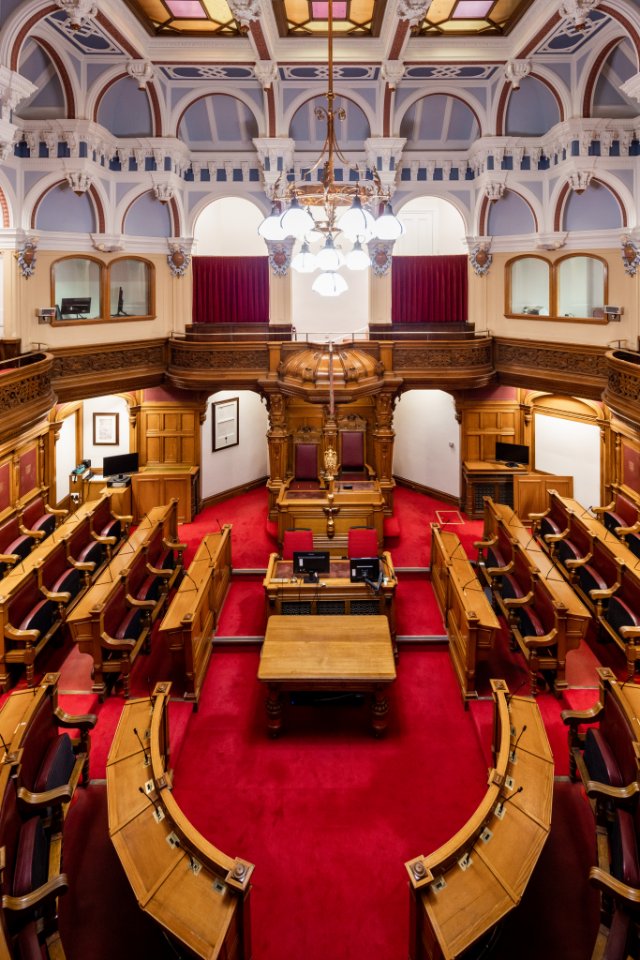Following a resignation or a vacancy arising in the office of Minister, the Chief Minister must nominate an elected Member to fill this vacancy before the end of the States Meeting after the one in which the vacancy was announced. This appointment can take place during a scheduled meeting or, if needed, at one specifically called for this purpose.
The Chief Minister is required to send a declaration to the Greffier stating;
- the names of the elected members they wish to nominate
- the proposed Ministerial office in each case, as well as the order in which the States will vote on them.
This must be sent by 9.30am on the day before the meeting, e.g. for a States Meeting starting on a Tuesday, it must be declared by 9.30am on the Monday. The Greffier then circulates this information to all States Members and publishes it on the States Assembly website.
The voting process for the selection of Ministers
At the Meeting to select the Ministers, the Chief Minister will nominate the chosen States Members as candidates to a Ministerial office and state the order in which they wish the Assembly to vote on them.
For each vacancy, the Bailiff will invite Members to nominate other candidates. Members cannot nominate themselves, and all nominations must be seconded by another Member. Each candidate will make a 10-minute speech and face 20 minutes of questions from the Assembly.
Where the only candidate put forward is the Chief Minister’s nomination, they assume the Ministerial position and office with immediate effect. If there is more than one nominee, the other candidates must withdraw from the Chamber whilst the other candidates are speaking.
An open vote will decide which candidate becomes the appointed Minister. The candidate receiving more than half the votes cast assumes the position. Where none of the candidates put forward achieve this, the candidate receiving the lowest number of votes withdraws and a vote is taken on those remaining.
Where two or more candidates receive the same number of votes, but fewer than all the other candidates, a vote is taken to choose which one will remain in the contest, with the lowest scoring candidate withdrawing each time until only one candidate remains.
Abstentions
Abstentions do not count as votes cast during this process, although Members retain the right to abstain, should they so wish. A candidate can withdraw at any time during this process.
In a situation where there is more than one Ministerial vacancy and the Assembly chooses a candidate other than the Chief Minister’s preferred choice for the first vacancy, the Bailiff will ask the Chief Minister if they wish to maintain their chosen candidate for the subsequent vacancy. If not, the Chief Minister can make new nominations and the same process follows.
The successful candidate will take up the position of Minister and assumes responsibility for that office with immediate effect. They may also then appoint Assistant Minister(s) with the consent of the Chief Minister. The ‘Executive’, which is made up of all Ministers and Assistant Ministers, cannot exceed 21 of the 49 elected Members.
Ministers and Assistant Ministers are unable to hold positions on Scrutiny Panels or the Public Accounts Committee and therefore leave any such roles upon commencing Ministerial responsibilities, triggering further appointment processes in the Assembly.
Ministers are in office until the next appointment to their role, or until they resign or are dismissed by the Chief Minister.










